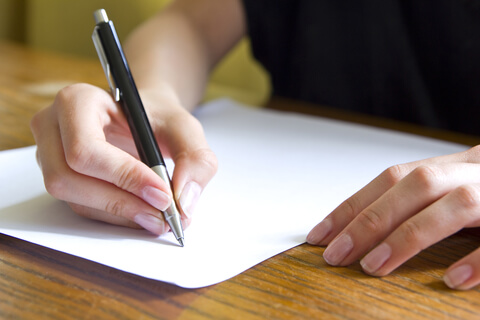It used to be that the easiest way to gauge a blog’s success was to check its traffic stats. More visits meant that a blog was popular, which could then be used to build revenue from ads. But blogs have evolved over time.
Organizations now use blog post not only for building traffic, but also to generate social shares, leads from newsletter signups and sales.
And so, conversions became the primary goal in content marketing. This required a shift in mindset when it came to content creation. It is no longer enough to just churn out informative content and wait for results. Great content converts through a combination of specific attributes.
In this guide, we walk you through the four components found in high-converting content, showing you how to incorporate these qualities into your own content marketing campaign.
Create a strong and compelling headline
A great headline invites people to read your content, but more important, a powerful headline primes readers for conversion.
Below are three sample strategies for creating strong headlines:
- Offer a solution to a problem. Headlines have a higher likelihood of converting readers if they describe a solution to a problem. For example, the title “5 Simple Ways to Create Attention-Grabbing Headlines” offers a solution on how to create compelling article titles.
- Create a sense of urgency. Titles like “Avoid These Mistakes Sabotaging Your Weight Loss Efforts Now” or “Use These Blog Hacks to Boost Traffic Before It’s Too Late” create a sense of urgency and compel readers to click on the article and act on the advice they read.
- Use “power” keywords. These words are basically strong adjectives that convey emotions. These include powerful, surprising, unknown, best, simple and most effective, among others. Take it easy with the superlatives though, because they can make content look like clickbait.

Focus on a strong opening line and paragraph
While the
inverted-pyramid style of writing content is not new, it is still relevant because of the short attention spans of online users. A
2015 Microsoft study found that online attention spans have fallen to an average of eight seconds, after which users begin to lose interest and move on to the next piece of online content.
The inverted-pyramid writing style circumvents this problem by providing the meat and potatoes of your content in the first few paragraphs or “above the fold.” Some online news sites (like the
Guardian.com) have taken it further by placing key takeaways directly under the headline to boost engagement and conversion rates.
Use calls to action
Again, the goal behind any content asset is to encourage readers to take a desirable action. As simple as it sounds, one of the easiest ways to do that is to
tell readers what to do. A call to action can be an image or a string of words that “call” on people to take “action.” It is either a like, share or purchase.
There are
many ways to use CTAs to boost conversions:
- Add a line at the end of your blog post prompting the reader to check out your products or contact your business.
- Use a visually striking button to encourage readers to click on an offer or share your content on social media.
- Use a simple and easy-to-use online form to capture leads: the simpler, the better.
- Offer a free, no-obligation trial of your services.

Make content clear and easy to digest
Online readers do not like fluff (short attention spans, remember?), so it is important to make sure your copy is clear and direct. While building brand awareness is important, do not do it at the expense of conversions. Your content should focus on providing value to readers.
- Focus on writing content that offers real benefits to the reader.
- Use easy-to-understand language appropriate to your target audience.
- Explain recommendations using checklists or bullet points.
Besides clarity, high-converting content should be easy to remember. There is a reason why listicles (articles with lists made popular by BuzzFeed) are so popular. They are easy to skim, organized by subtopic and subheading, and let readers know what to expect.
Include testimonials
Many readers who aren’t yet customers are apprehensive to take the next step in the buyer journey. You haven’t created enough trust with them yet. One of the best ways to do that is to share testimonials of real people just like them who are pleased with your products or services.
In fact, written testimonials can
increase your conversion rate by 34%. By sharing testimonials, you increase credibility, and your prospects now have a realistic example of what their experience with your company would be like.
Of course, it’s important to include testimonials that are authentic and relatable to your audience. If they can’t connect with the testimonial’s problem, this content type is useless. Additionally, don’t just add testimonials randomly. Find a way to incorporate them organically on landing pages or create a blog article dedicated to that story.
Conclusion
The primary goal of any content marketing campaign is to generate conversions (e.g., social shares, leads, sales). This means engaging your audience, nurturing them with high-value information and making an offer when they are primed for conversion.
These four components are a good place to start, but there several other strategies you can use to experiment. Content marketing is as much a process of trial-and-error as any marketing method. Don’t be afraid to discover what works for your circumstances.
Need help?
If you have a content marketing program or are planning one, download our e-book “
100 Mistakes Businesses Make When Starting, Optimizing and Scaling Content Marketing Programs.”
This e-book will walk you through the mistakes of hundreds of other companies and the challenges they faced in implementing their content marketing programs. To learn more about how Tempesta Media can help you streamline your content creation process and deliver quality content at scale,
contact us today.












